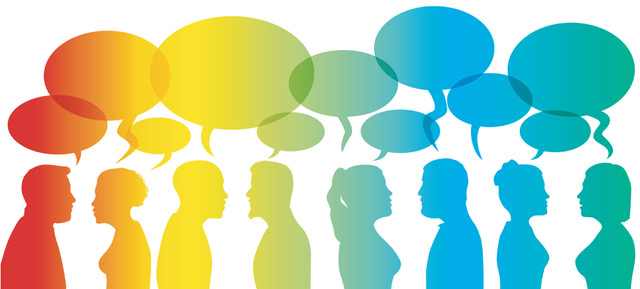By Judith E. Glaser | forwardmetrics.com
Published: July 9, 2014
 You’re sitting in a meeting with your team brainstorming about the financial crisis, and what to do about it. Business is awful. People have stopped buying your products. Market share has plummeted. Everyone is scared and emotional. Some people express anger; others close down.
You’re sitting in a meeting with your team brainstorming about the financial crisis, and what to do about it. Business is awful. People have stopped buying your products. Market share has plummeted. Everyone is scared and emotional. Some people express anger; others close down.
Have you ever found yourself in a situation like this? You are trying to navigate through the conversation and be helpful. It’s confusing to keep track of what’s going on. When you hear an idea you like, or see an opening to something new, you jump in and share it at the moment it occurs to you. Then someone closes that door and says, “that’s a stupid idea—we’ve tried that before and it failed.”
When you hear the words stupid and failed, you have an emotional reaction to the situation and person. You tune out of the meeting and ruminate. On the outside, people think you are still there. Your body is present, and your face may show signs of listening, yet a big part of you has left the meeting.
Your attention is now turned inside to your silent conversation with yourself about being stupid, and failing. You remember other times when your boss or colleague said you were stupid. You get angry and find yourself in a movie clip of you and your boss yelling about something. You are getting emotional and feeling bad about yourself. You recall a conversation you had with Jason, one of your teammates in the room; you faced-off with Jason and lost.
When you return to the conversation, the team is on to something else. You feel lost and strange about asking for a recap, so you shut up. Later, someone comes and asks why you were angry in the meeting and then shut up. They made assumptions and projected interpretations because all they saw was your angry face and then your silence. What you didn’t realize is that while you were recalling old angry memories of failing and being stupid your face became angry, and that is what others saw. While your “movie” only lasted 12 seconds, it had a huge impact on the meeting and the mood. But you couldn’t see what others saw.
Our research conducted during the writing of our newest book, Conversational Intelligence: How Great Leaders Build Trust and Get Extraordinary Results, is demonstrating that our brains disconnect during conversations every 12 to 18 seconds, as we get hooked on key words that send us back to emotional memories. Our movie-making mind brings up these old memories and edits them into a draft of the current situation, changing the meaning, from your perspective, of the meeting you are experiencing in the now.
As neuro-scientific research is also demonstrating, bringing emotion-laden memories into the present only amplifies the present. If the memories are “feel bad,” you bring more pain and feel bad into your interpretation of the present. If the memories are “feel good” you bring more pleasure into the present.
Our Five-Brains
Behind the Neuroscience of Conversationsis a model for seeing our brains not as one brain, but as five brains—each hard-wired to help us sort out and sort through our interactions with others.
- Reptilian Brain informs about threats (physical and psychological) to our safety.
- Limbic Brain informs us who is our friend or foe and how we can fit in— relationships;
- Neocortex sorts through data from our senses, memories, and experiences, and helps us make sense of our reality—understanding.
The other two brains work in concert to influence what it means to be human.
- Heart Brain our oldest brain, reads the biochemistry of our bodies and enables us to translate the energetic and hormonal messages that arise as we interact—sensitivity.
- Prefrontal cortex or Executive Brain engages us with the outer world and the future, helping us grasp inner and outer Truths. By translating current information, impulses, and biochemistry, it helps us make judgment calls, have empathy, anticipate the future—what I call Futuresite and Foresight.
Our brains are made to be social so when we aren’t paying attention to the work at hand, we are connecting with others—that is what our brain wants. Next time you are in a conversation, let the power of your five brains give you insight into how to respond.








